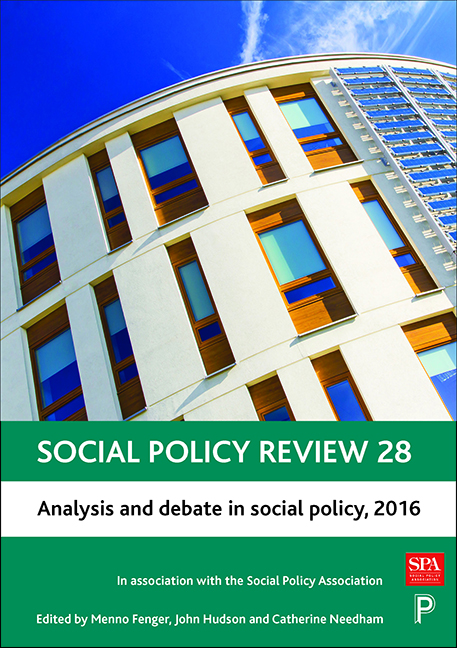Twelve - Personalised care funding in Norway: a case of gradual co-production
Published online by Cambridge University Press: 05 April 2022
Summary
Introduction
Currently, many European welfare states are searching for ways of meeting the future's increasing demand for long-term care services (EU, 2012). One of the central ways of meeting that demand is about changing the role of the welfare service recipient from a passive receiver of welfare state services to an active social citizen directly involved in and participating in the production of services (Johansson and Hvinden, 2007). Two key theoretical concepts applied for analysing this involvement and participation currently are ‘personalisation’, meaning personalising the services (see for example, Leadbeater, 2004; Christensen and Pilling, 2014) and ‘co-production’, primarily between the user and local authorities (for example, Hunter and Richie, 2007; Needham and Carr, 2009; Scourfield, 2015). In this article, using a case analysis, the author will show that it is fruitful to combine these two concepts, this being further explored below. Co-production represents a stronger version of personalisation, but there are also different strengths of coproduction. This implies gradual manifestations of user involvement and participation. However, any critical case analysis in this matter requires the researcher to reflect on these different manifestations to see if modifications of the strength of user involvement and participation have to be made at the different levels. The aim of this chapter is to present a case of gradual manifestation of co-production, simultaneously looking at the nuances within this. Intentionally, a Scandinavian case is used, as Scandinavian countries in general are known for their generous welfare services (Esping-Andersen, 1999) and therefore often are presented as examples to follow.
The Norwegian case of BPA
The case that will be used here is the user-controlled personal assistance scheme in Norway (Brukerstyrt Personlig Assistanse, BPA). This is a welfare arrangement that, based on legislation-based assessments, allocates a budget (here called personalised care funding) to disabled people; they can then employ their own care workers – called personal assistants – to assist them with the help they need in everyday life. In the UK, similar arrangements are direct payments, and later personal budgets (see for example, Land and Himmelweit, 2010). Although this arrangement based on a personalised care funding is not confined to disabled people, in practice this is most usually the case in Norway, with eight out of 10 users being physically disabled people (Johansen et al, 2010: 16).
- Type
- Chapter
- Information
- Social Policy Review 28Analysis and Debate in Social Policy, 2016, pp. 233 - 250Publisher: Bristol University PressPrint publication year: 2016
- 1
- Cited by

